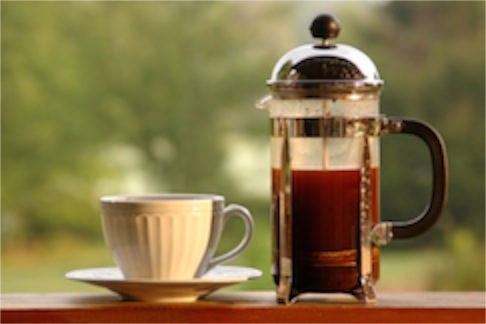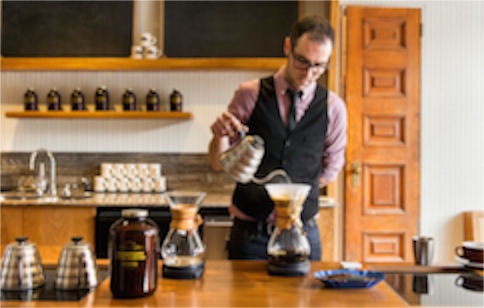A Connoisseur's Snobbery
15/05/13 04:28

When I buy a bottle of wine, which I rarely do, and most often do as a gift to someone else, I pay attention to the price. Like other purchases I do have my limits and pretending that I have more financial resources than I do seems pointless and silly. I know just a little bit about varieties of grapes and names of wines. From there, I usually choose the wine by the label. It is not a sophisticated system and one that a connoisseur would certainly turn his nose up at. But then an expert in the English language would be equally dismayed at the dangling participle at the end of the last sentence.
Given all of the culture and tradition and ritual and general hoopla that surrounds wine, I’m a bit dismayed at the growth of contemporary coffee culture in the United States. That arena is starting to fill up with snobs and I fear that it is becoming as uppity as wine these days.
Susan and I were early to have a coffee grinder and purchase beans from specialty roasters. When we lived in North Dakota, the closest roaster was 150 miles away and I looked forward to trips to that town to purchase fresh coffee. This time of the year is when the first fresh beans from Central America begin to arrive and I learned a bit about the seasons of coffee and different varieties from around the world. In those days we also used canned coffee for our home brewing because we didn’t always have access to fresh beans.

When Starbucks opened its first espresso bar at Pike Place Market in Seattle, I had relatives in the area and before long had been treated to the theater of baristas pulling shots and making lattes and cappuccinos. There was a real indulgence in the foamy milk and I developed a taste for it. I begin my day with a latte with a touch of honey or maple syrup most days. But it is an indulgence and even without the sweetener, the milk does mask the flavor of the coffee. When I am in the mood for the flavor of coffee, I’m likely to reach for a pacific coffee such as Kona or Sumatra and a coffee press.
As one might expect from Starbucks, given its Seattle roots, the company has invested a lot in showy technology. The company features Maestro espresso machines in its stores for pulling shots, steaming milk and crafting their signature beverages. In the past few years select stores have installed Clover machines for making a cup of brewed coffee. The Clover is a ridiculously expensive reverse coffee press, using vacuum to pull the grounds up to the top of the coffee and pull the liquid from the bottom. It makes a great cup of coffee in which there is no residue or grounds in the cup after you drink. When I have had the opportunity, I have enjoyed a few cups brewed with the Clover.

You can count on both coasts of the country to produce cups of coffee that retail in the $5 area that would cost pennies to make at home. They are selling culture and ambiance as much as coffee.
They’re also selling coffee snobbery – a quality I find as appealing as wine snobbery.
When we moved to Rapid City in the mid ‘90’s I commented to someone that the best cup of coffee in town came out of my kitchen. It was an arrogant statement and probably false. But there is a grain of truth to that. The best coffee is that which is shared with friends. It doesn’t have to cost a lot of money or have a specialty vocabulary. It doesn’t matter how it is made or where the beans were roasted. What matters most is sharing with friends.
I’m not quite ready to join the gang that gathers daily for coffee at McDonalds (where they have a senior discount that saves a dime a cup) quite yet. But I seem to be getting closer every day.
In the meantime, stop by my house or office for a cup of coffee some day. It might not be the fanciest, but the company is good.